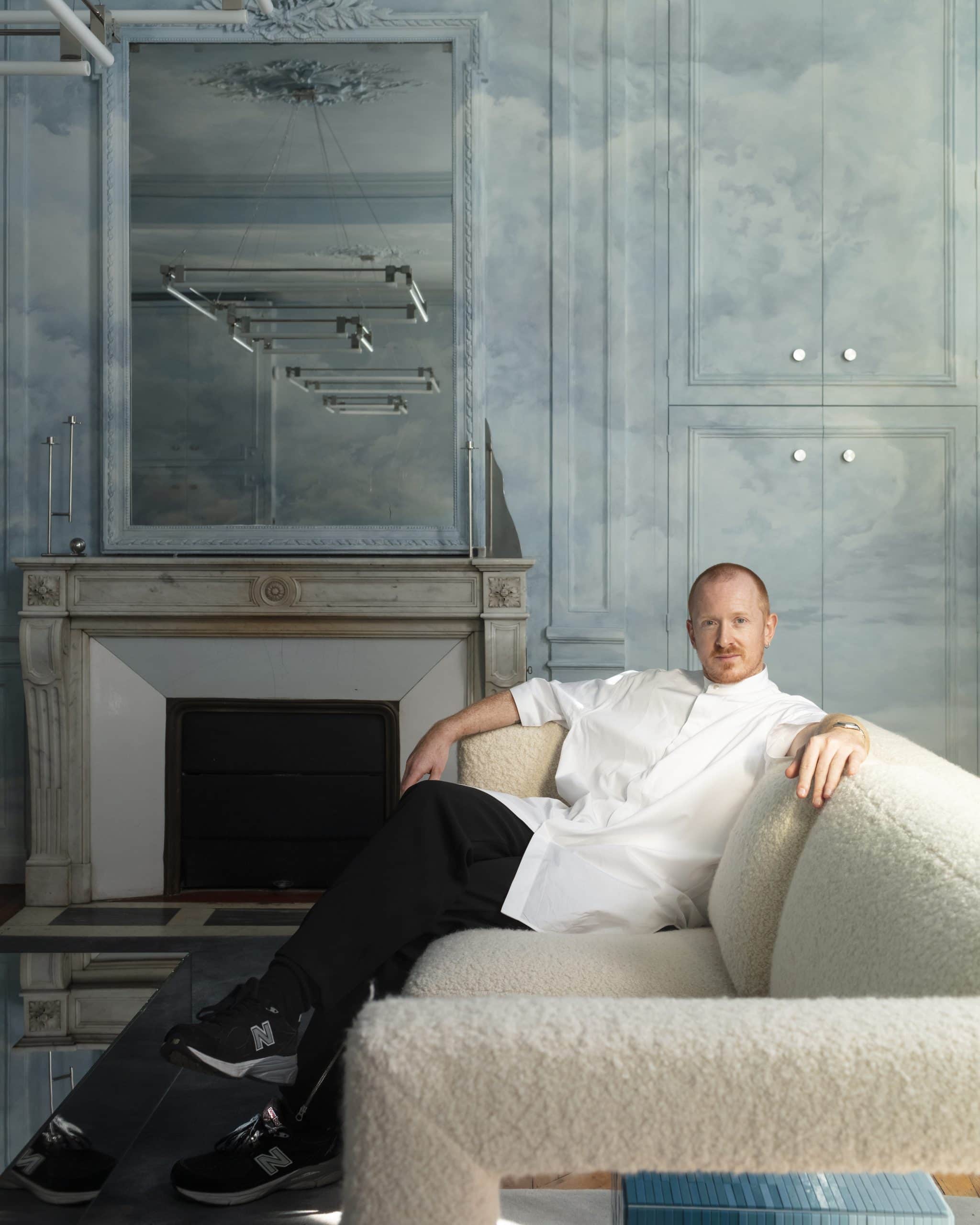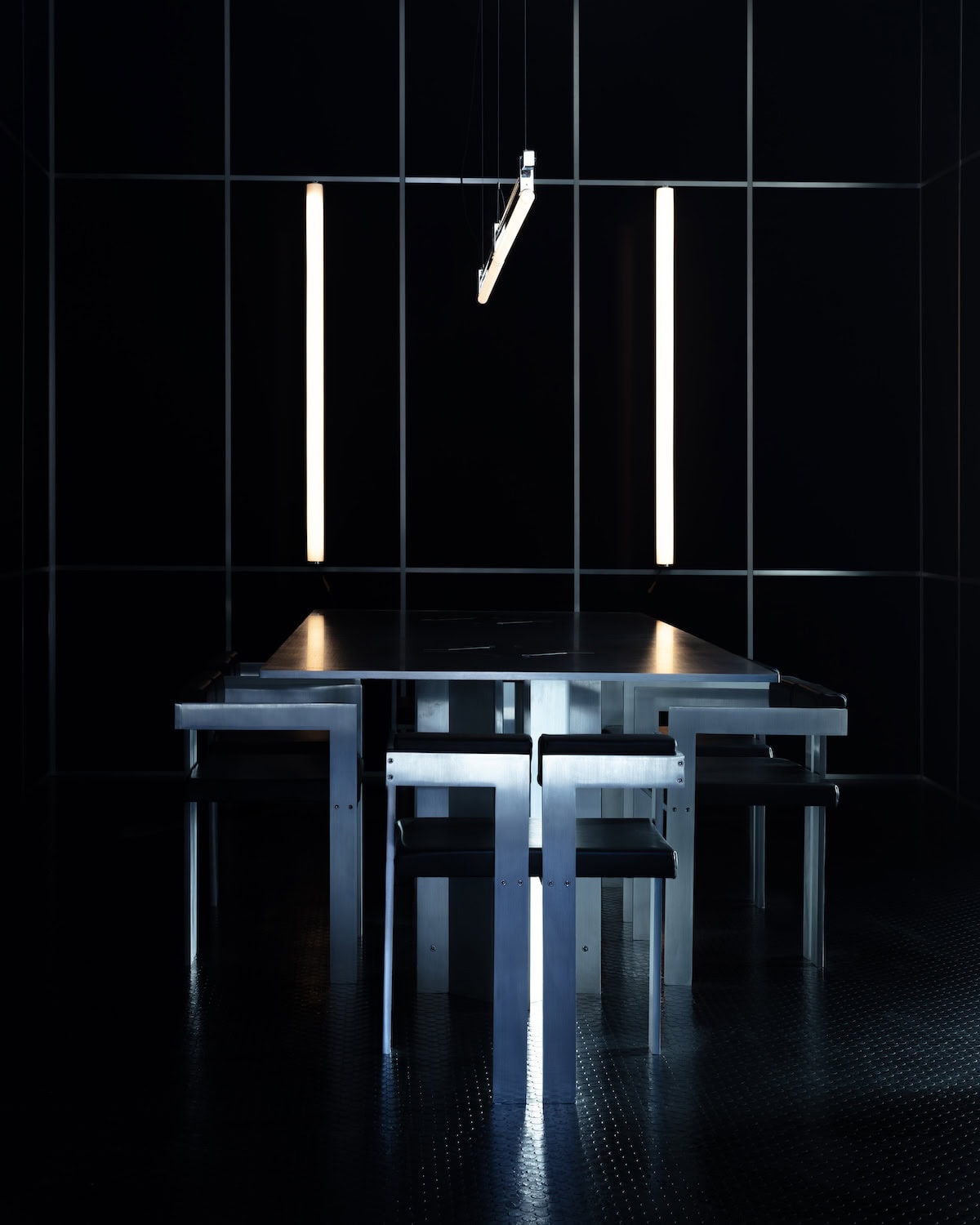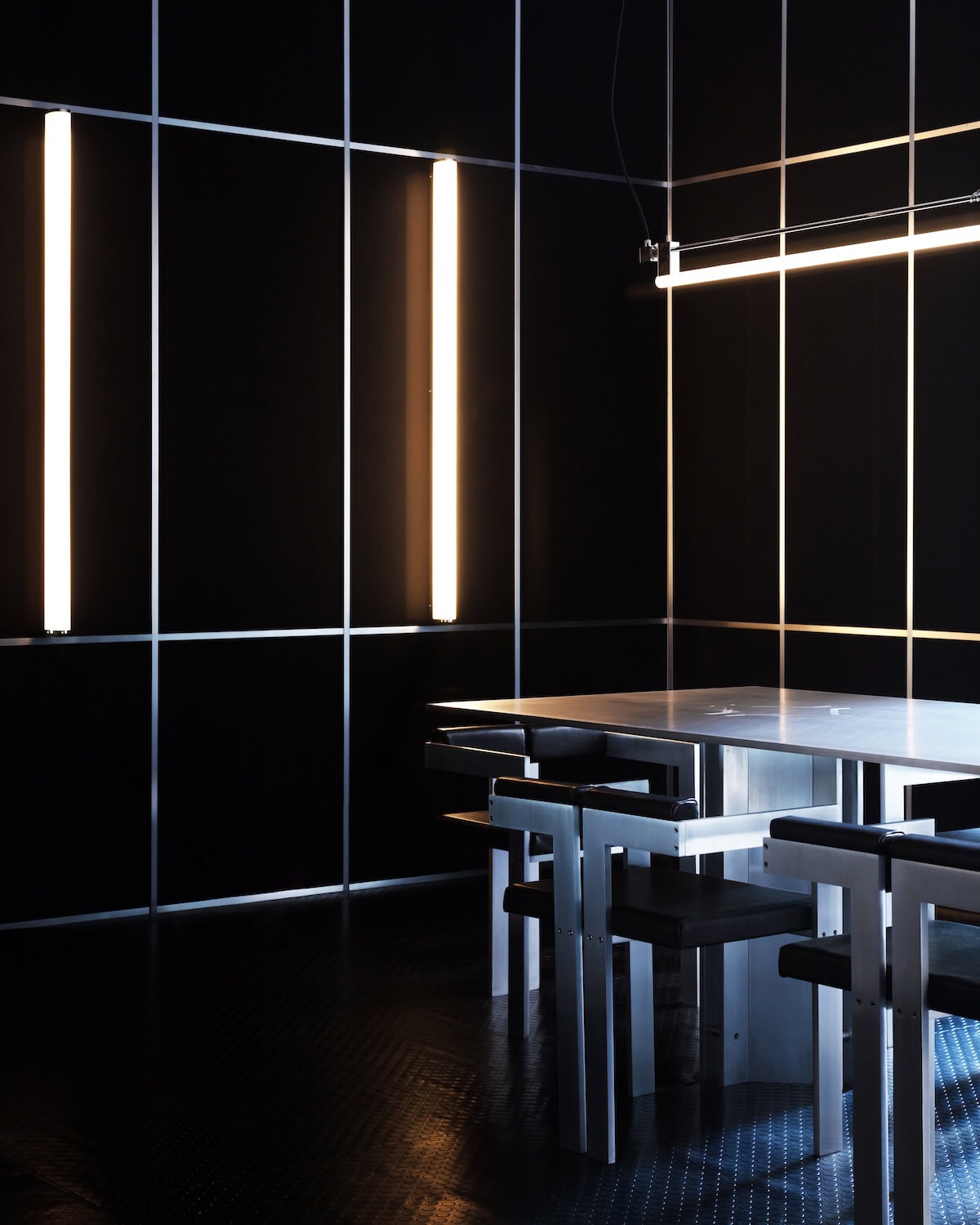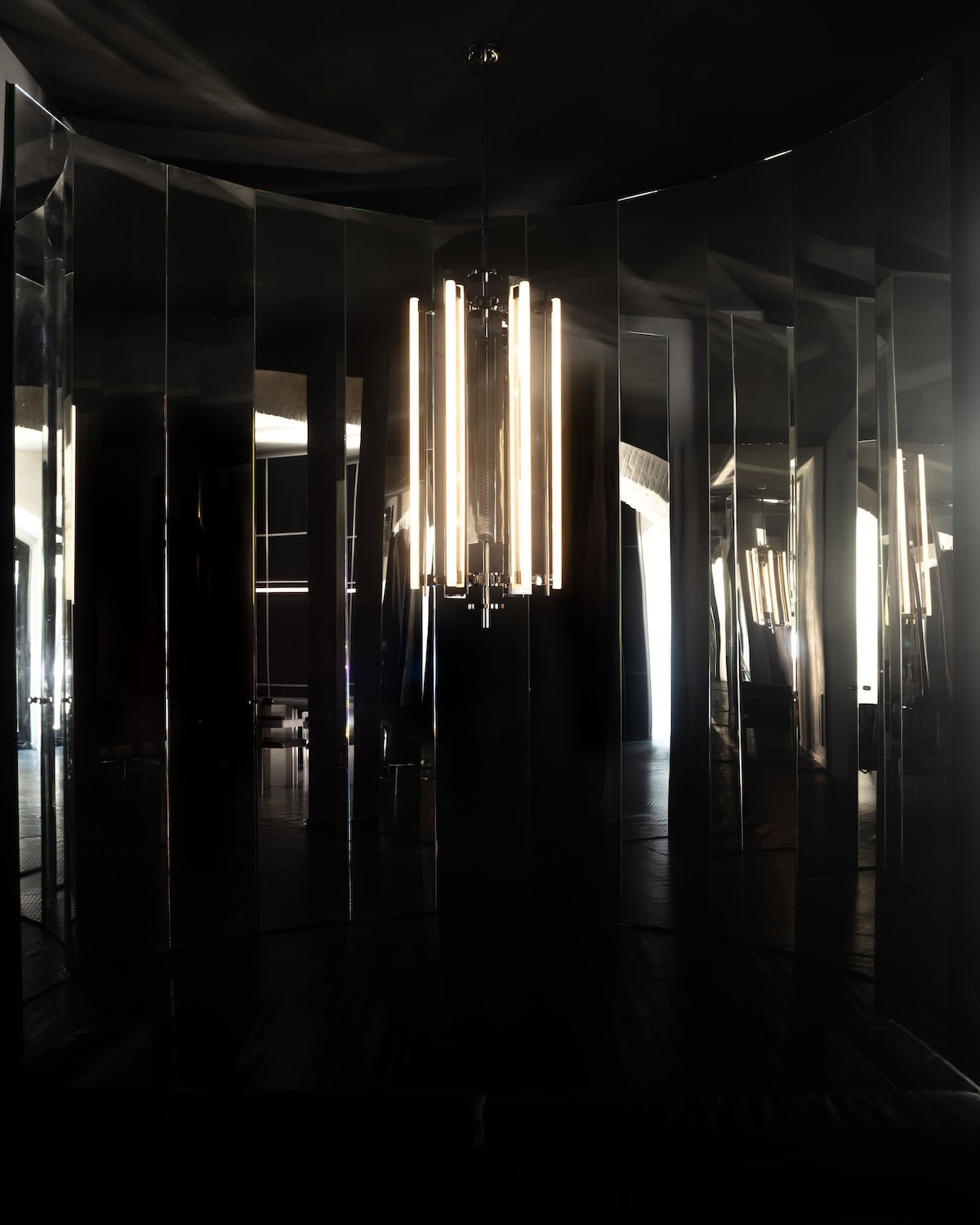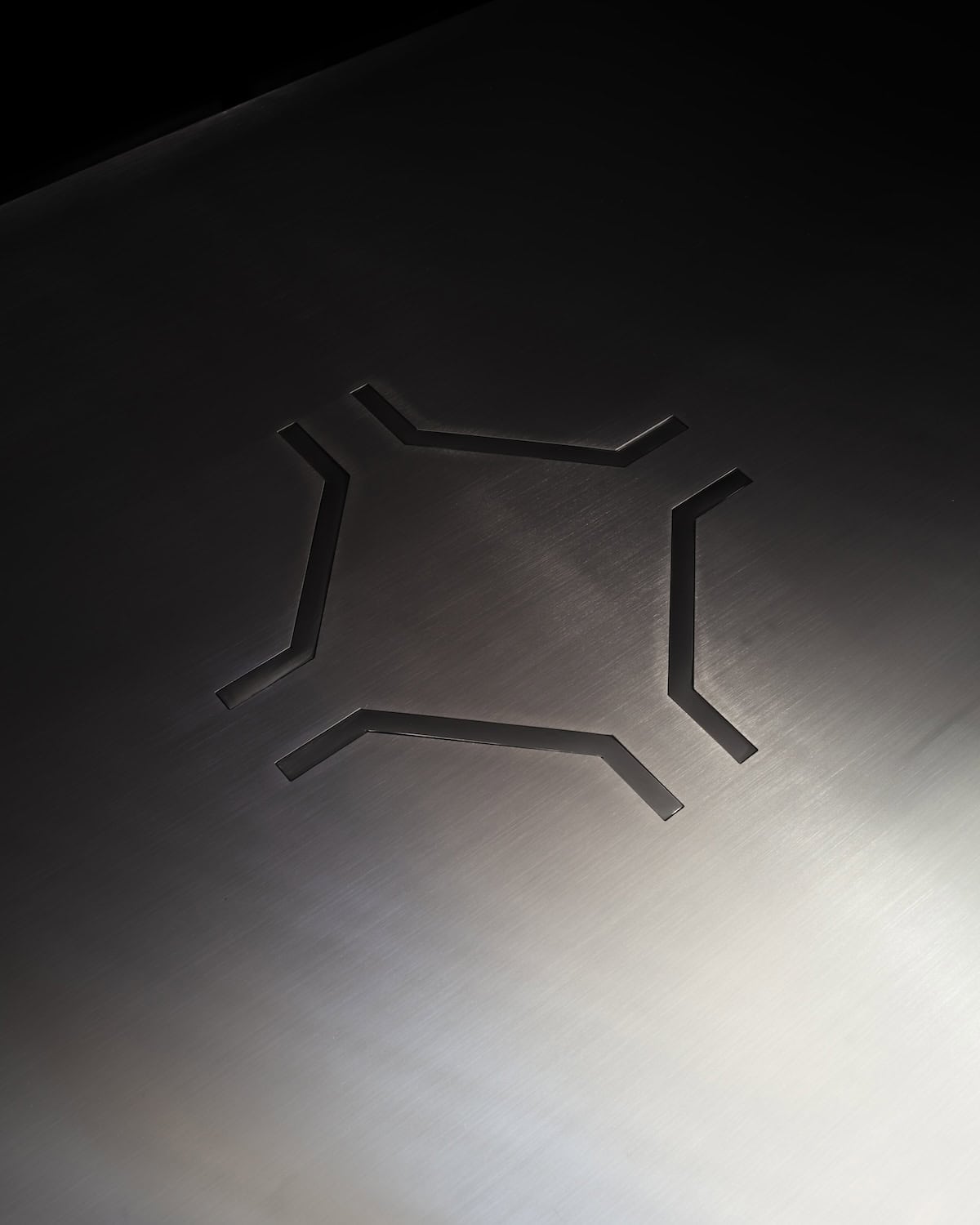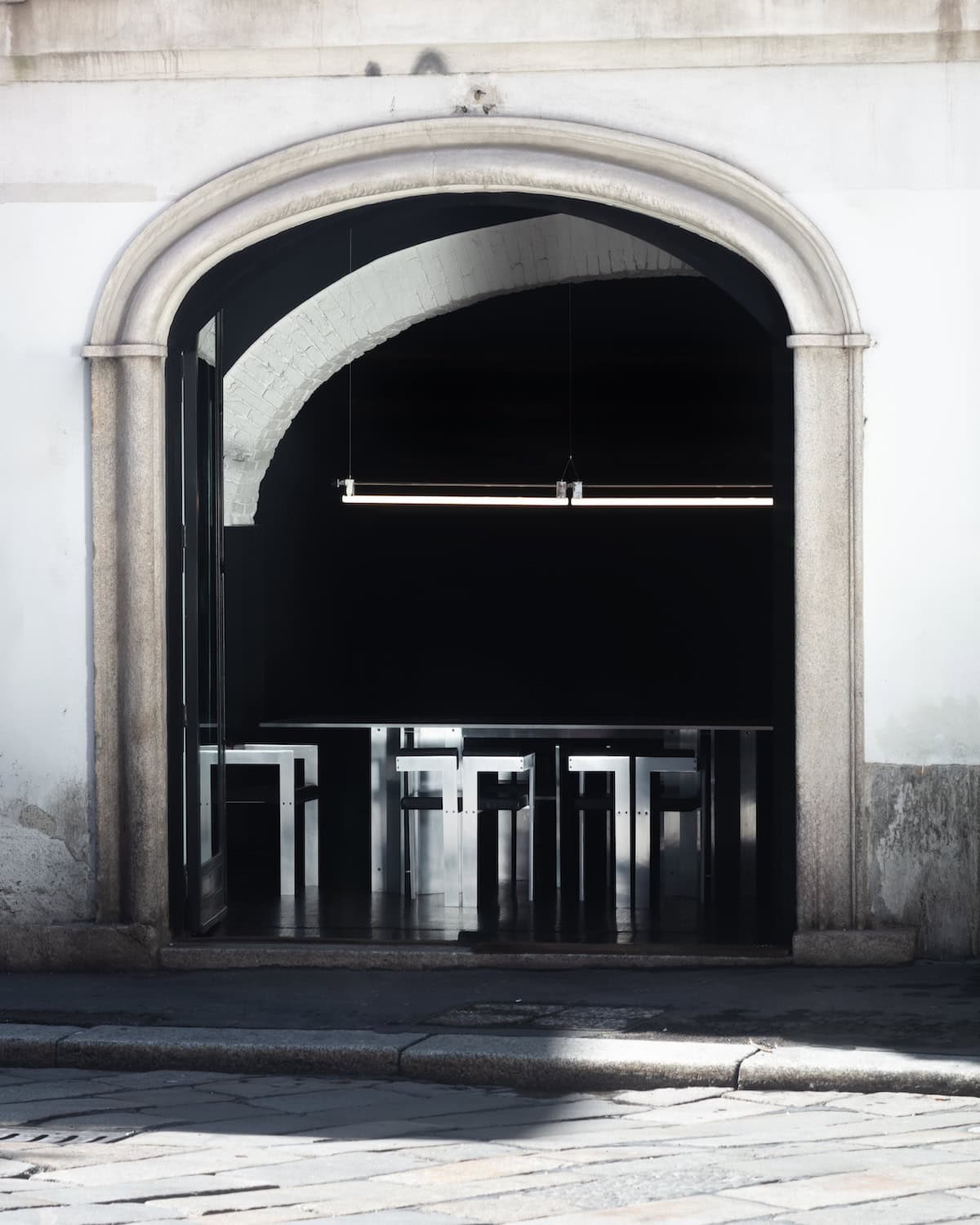Gustave Doré was a French illustrator and painter, best known for his many engravings of classical literature including Dante’s Divine Comedy, Cervantes’ Don Quixote and François Rabelais’s iconic satire and bawdy tales of Gargantua and Pantagruel. His works were a great mix of references to 19th-century street life, created with the intention of illuminating and decorating the lives of poor and illiterate people. At first glance, however, they do not look like that. When we approach Doré’s drawings for the first time, we get quite the opposite impression: a cold light, a feeling of awe, a kind of romantic fear of God and nature that tears us apart. Why is that? And what does it have to do with John Whelan, The Guild of Saint Luke, and the British/German brand KAIA? I would say that the same thing happens when we look at the lighting objects resulting from the collaboration between The Guild of Saint Luke, designer John Whelan’s studio and the European lighting studio. We remain shy in front of the luminaires that make up The Empyrean collection. They look majestic and unapproachable, trapped in a distant spaceship or driving too fast in a car. But just like in Doré’s drawings, they are the exact opposite: full of light. Perhaps they are lamps in disguise.
Alessia Baranello: Doré was so many things, perhaps more than any other artist in history: a comic illustrator, a caricaturist, but also, for example, a religious and institutional painter. He painted subjects from the secular world, with a predilection for gypsies, fortune tellers and circus people, as well as scenes from the Creation and the Bible. Could this mixture of low and high references have inspired your collaboration with KAIA?
John Whelan: I think what you said would be an accidental metaphor for me as a person. I am a working-class guy who tinkers with highfalutin ideas. There’s a lot of academicism in me which goes with a very ordinary background. What you’ve just said about Gustave Doré is true, but I would say that what inspired me most about his work was his extremely poetic depiction of esoteric references and the divine. You know of course the illustration called The Empyrean: it is essentially a sequence of suns in a spiral shape. This esoteric starburst has been common in esoteric imagery for about 500 years–since the Renaissance–because it represented light, knowledge, and understanding at a time when civilisation was battling the dark forces of the Dark Ages. In the Middle Ages we as humanity were coming out of darkness and into civilisation. That’s quite a poetic starting point to define what light is or could be because you’re dealing with something that’s an eternal truth.
AB: So if Doré inspired you to research light, what inspired you to design the lamps?
JW: The design itself, I would say, is more related to Art Deco of the 1920s, like the work of the Irish Eileen Gray, in terms of the search for a precise and minimalist architectural language. In the case of the Empyrean chandelier, for example, I opted for a starburst shape that emanates from the core of the piece – similar to the illustration of the same name by Gustave Doré, but also to a famous room designed by René Prou during the Art Deco period, which was essentially intended to reflect light in infinity.
AB: In Italy, the mention of the Empyrean immediately brings to mind the point in the Divina Commedia where Dante visits God in Paradiso. Here it is described as a space without time, made of pure light. The Empyrean is also the title of guitarist John Frusciante’s apex solo album.
JW: The album The Empyrean hit me at a time when I needed music as bondage for the soul, and it was the thing that influenced me the most at the time of making this collection. The themes that Frusciante explores in The Empyrean are very similar to those we touched on with Gustave Doré. As a musician, Frusciante is the ultimate remastering of the past in his guitar playing style: he evolves Jimmy Endrix, he evolves Punkadelic and all these other incredible references that we all know. The Empyrean is a kind of messianic complex album where he explores esoteric themes in a way that only people with the awkwardness of genius can do.
AB: One of the ideas behind the collection was to create a cinematic experience with respect to light. Are there any films that inspired you in terms of how you wanted the rays of light to look?
JW: I would say that there are definitely shades of 2001 Space Odyssey in this collection, such a strong Kubrickian attitude in a way. In general, I think there is always a cinematic intention in what we try to do as designers because otherwise, it comes out very boring: cinema gives a narrative quality to a piece of design.
AB: There is also a dark edge to these pieces of work, especially when exhibited in this kind of environment.
JW: The fabric paneling that covers the wall still warms up the space a bit and creates a nice contrast with the very cold and angular pieces by KAIA. The purple upholstery is actually a British fabric, inspired by the great work of a very famous British designer: David Hicks. When we conceived this exhibition, we even wanted to block the natural light with a kind of silver bar over the window, which would have mirrored the whole thing happening inside with the light pieces. In the end, I’m glad we kept the connection with the streets of Milan.
AB: With the Guild of Saint Luke, you’re trying to convey a kind of antique feeling about decorative arts in Europe, following the idea that “the interiors of the past are the heirlooms of the present”, as you say on your website. Is there a connection between today’s collaboration with KAIA and the mission of your studio?
JW: My studio – the Guild of Saint Luke – has always used KAIA products for lighting because we do a lot of historically referenced studio designs and when you have historical lighting, it easily becomes a historical pastiche. You need contemporary lighting to cut through history like a light saver and immediately remind you that you are in 2024. The chandelier, the centerpiece of this collection for KAIA, is a kind of meeting point between GSL inspirations and the technical beauties and expertise of this brand.
KAIA’s operational offices are based in London, however, in these twenty years the studio has been able to attract a constellation of traditional workshops, drawing on handcrafted practices all across Europe. Through locality, craftsmanship and regional sourcing of materials, KAIA puts sustainability at the heart of its vision, in the most sincere way, by rethinking the increasingly common exploitative production chains of global design.
AB: In a nutshell, what is KAIA and what is your vision?
KAIA: Ten years ago, KAIA was a brand with one designer. Recently we have tried to open it up to external collaborations, while maintaining our classic pieces in production, such as KEA, this line of LED lights, which is also incorporated in one of John’s works for this collection: Trap. At the moment, the brand has two souls targeting two different audiences: the collections side, which are affordable staples, and the editions side, where we get to experiment with designers and artists. John is the quintessential remasterer of the past, so in this exhibition for the Salone del Mobile we have really exaggerated these two sides of the brand: we have gone back to the past, to some of our first and most important lighting furniture pieces, and displayed them in the same room as the latest Empyrean chandelier and the Trap lamp.
AB: In your opinion, is sustainability and community one and the same thing in design?
KAIA: Absolutely. Also, when I mentioned affordability earlier, I meant affordability achieved without the use of mass production, which is not something that is very common nowadays. As KAIA we feel very much in line with the manifesto of the Vienna Secession: we are very much against mass production and for each material we work with a number of specialists all over Europe. Our philosophy is to support craftsmanship, small families, and secular workshops across the continent. For example, in Glow, a pendant created in collaboration with French designer Sophie Dries, we balanced organic paper from Apulia, Italy, with brass from Germany and mouth-blown glass from artisans in Vienna. This collaboration with John and The Guild of Saint Luke really captures the essence of KAIA.
